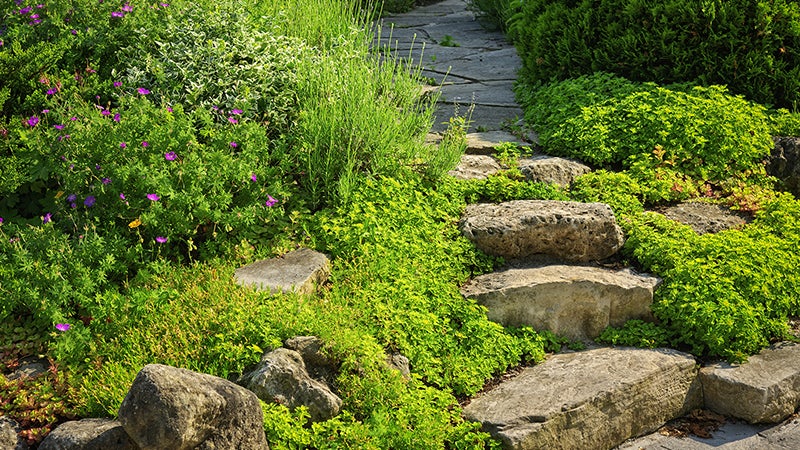Natural Landscaping: Step 1
Published 10:35 pm Monday, May 18, 2020

- If you have some of the same ideas for your landscape but are not sure what to do or plant, there are several good resources for information on the internet.
|
Getting your Trinity Audio player ready...
|
Brenda Peters
Master Naturalist
I am at a point in my life where I need to make things simpler. Less clutter and more organization will hopefully lead to less stress and more time to enjoy life. I have been slowly working on things inside the house, but the spring season reminds me that I need to do the same outside.
I live on several acres that are mostly woods. A lawn comprised of weeds and wiregrass surrounds the immediate area around the house. Flowerbeds encompass most of the foundation and are filled with a variety of native and ornamental plants and shrubs. I spend a lot of time mowing, weeding, pruning, deadheading, etc. I also spend a lot of time trying to keep all kinds of plants and seedlings along the woods edge from overgrowing and creeping into the yard.
So, how can I make things simpler? I have decided to make better use of a natural landscape. Sure, it will take some work to achieve the end result. But if work in the beginning saves me work in the end, it will be worth it. I have decided on a three-prong attack. First, I plan to get rid of the ornamental plants and shrubs in the flowerbeds and replace them with native plants that do not require a lot of upkeep. Second, I want to get rid of the invasive plants, like Japanese Honeysuckle and Tree of Heaven, that have taken up residence in the woods edge. I also want to plant more native shrubs along the edge and promote more native plants, such as ferns. Third, I want to reduce the amount of lawn by bringing the woods edge closer and doing away with the small grass areas on the sides of the house.
If you have some of the same ideas for your landscape but are not sure what to do or plant, there are several good resources for information on the internet. The Virginia Department of Conservation and Recreation, www.dcr.virginia.gov/natural-heritage/, and Virginia Department of Game and Inland Fisheries, www.dgif.virginia.gov/wildlife/habitat/, are two of my favorites. Both have lots of information including lists, publications and ideas about invasive and native plants and how to landscape to help our pollinators and wildlife.
So, that is my overall plan and now it is time to get to work. I will let you know how things progress.
If you are a person with a disability and require any assistive devices, services, or other accommodations to participate in this activity, please contact the Isle of Wight Extension Office at 757-365-6261 during the hours of 8:30 a.m. and 5:00 p.m. to discuss accommodations 5 days prior to the event. *TDD number is (800) 828-1120.
Virginia Cooperative Extension programs and employment are open to all, regardless of age, color, disability, gender, gender identity, gender expression, national origin, political affiliation, race, religion, sexual orientation, genetic information, veteran status, or any other basis protected by law. An equal opportunity/affirmative action employer. Issued in furtherance of Cooperative Extension work, Virginia Polytechnic Institute and State University, Virginia State University, and the U.S. Department of Agriculture cooperating. Edwin J. Jones, Director, Virginia Cooperative Extension, Virginia Tech, Blacksburg; M. Ray McKinnie, Administrator, 1890 Extension Program, Virginia State University, Petersburg

